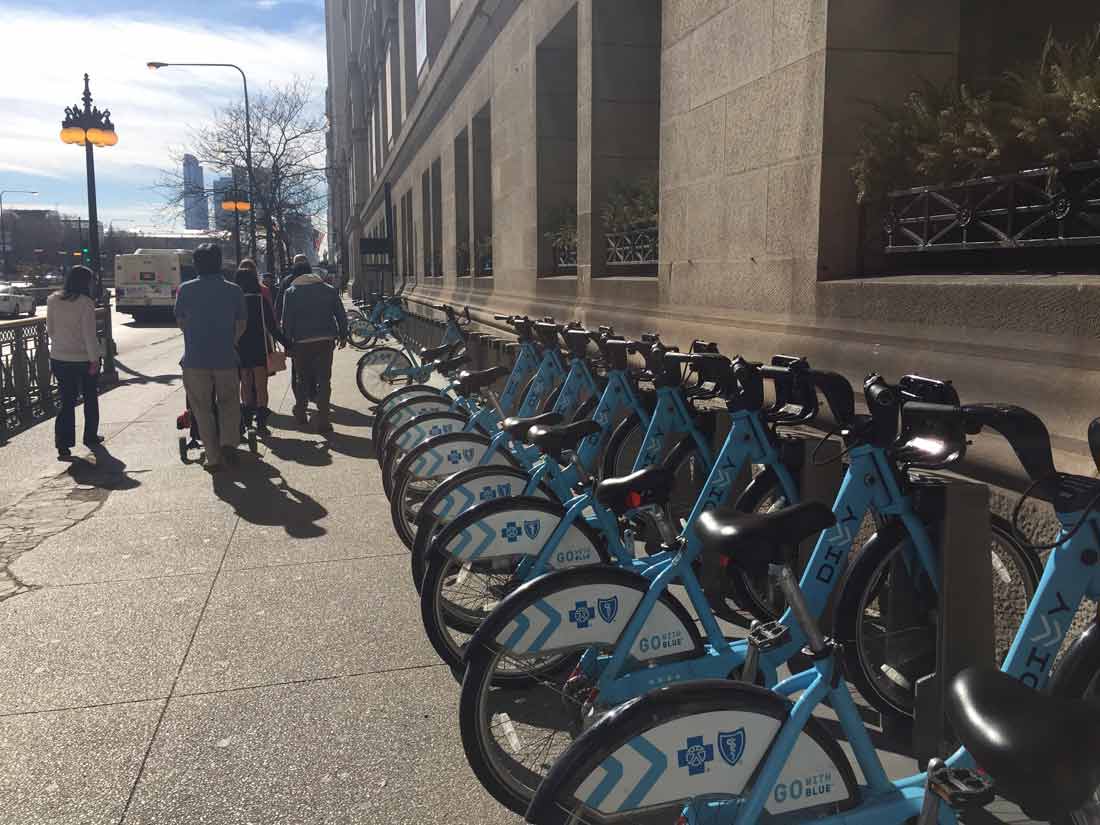By Haley Velasco
Molly Russell, 26 years old, who is new to Chicago, rides her bike from Lakeview down Lake Shore Drive to get downtown for school.
“I can just hop downtown with a really easy ride. No stress,” Russell said. “I’m really impressed by the transportation around Chicago. … It has not been quite as cold over the past couple of weeks so I have been trying to bike just to save money and get out and about.”
Rated as the No. 1 biking city in 2016, according to Bicycling Magazine, Mayor Rahm Emanuel and the city have made commitments to improving bike lanes and increasing access to bikes through bike-sharing programs like Divvy.
According to Divvy’s released ridership numbers, in Q4 of 2014, 88,972 people 16-27 years old rode Divvy bikes. Out of a total ridership of 437,965, that means approximately 20.21 percent of riders were millennials.
In Q4 of 2016, 207,686 people 18-29 years old rode Divvy bikes. Out of a total ridership of 683,382, that means approximately 30.39 percent of rides were taken by millennial riders.
“The Divvy program is certainly going to be something that is going to be expanding and helping people get access to cycling. Whether they are using those bikes for transportation or for some recreation,” said Lou Kuhn, owner, mechanic, manager, The Pony Shop. “I think they are mostly getting used for transportation. That certainly seems to be expanding. The capacity for people to be able to get into cycling easily around here.”
At the end of 2016, Divvy also announced that it hit 10 million rider mark since its founding in July 2013. This made Divvy the third bike-sharing system in the nation to hit the milestone, following Capital Bikeshare in Washington, D.C. and Citi Bike in New York City.
“There’s been a great uptick of millennial bikers,” said David Pohlad, program director, Bikes N’ Roses, a non-profit that employs youth in bike shops in Albany Park and Belmont Cragin. “I saw it starting when I was in high school about eight years ago, and it’s still growing. I think a lot of it has to do with freedom. In a city as dense as Chicago, you can get anywhere on a bike quickly,”
“The Divvy program has done a lot for cycling. It’s great for people that aren’t quite committed to biking enough to buy a bike, lock, helmet, lights, etc. can jump on and go.” Pohlad said.
The Chicago Department of Transportation created the Divvy for Everyone campaign to “offer all Chicagoans an affordable, accessible and fun transportation option,” according to Divvy. People 16 years or older (with an annual household income at or below 300 percent of the Federal Poverty Level,) can register for an annual membership for just $5.
“Personally, I look at the introduction of Divvy’s “Divvy for Everyone” (D4E) program as one if its largest successes yet,” Pohlad said. “It addresses this lack of cycling access and provides residents of low income neighborhoods an equitable opportunity to cycling as a form of transportation.”
Mayor Emanuel also pledged last year to create 50 more miles of lanes over the next three years, have been helpful with getting riders, especially millennial ones, on bikes.
“Millennials that we see that are getting into it are getting into it as a lifestyle choice. They don’t want to be on the train. They don’t want to be on the bus,” Kuhn said. “They just want to be in charge of their own transportation with riding. I think it’s a freeing way to live your life.”


